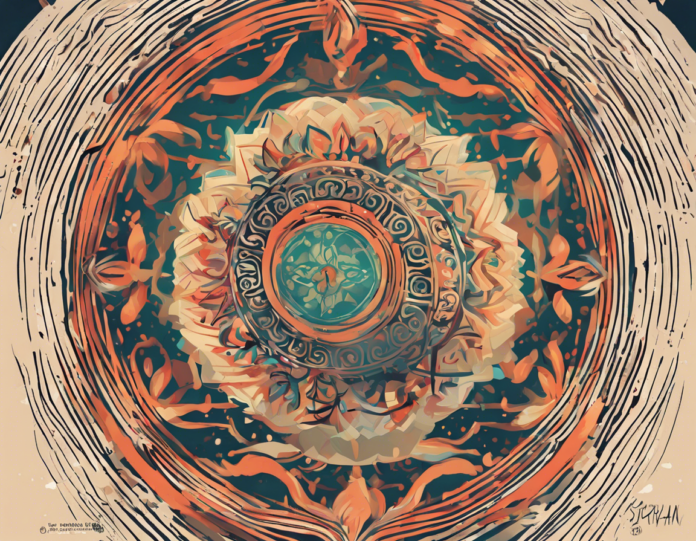Introduction
The celestial phenomenon of Surya Grahan, also known as a solar eclipse, is a captivating event that occurs when the Moon passes between the Sun and Earth, blocking the sunlight and casting a shadow on Earth. It is a rare and awe-inspiring event that has fascinated humans for centuries.
Types of Surya Grahan
There are three main types of solar eclipses:
-
Total Solar Eclipse: This occurs when the Moon completely blocks the Sun, casting a shadow on the Earth. This results in the Sun’s corona becoming visible to the naked eye.
-
Partial Solar Eclipse: In this event, the Moon partially covers the Sun, creating a partial shadow on Earth. The Sun appears as a crescent during this eclipse.
-
Annular Solar Eclipse: An annular solar eclipse happens when the Moon is farthest from Earth, causing it to appear smaller. As a result, the Sun forms a “ring of fire” around the Moon during this eclipse.
Phases of a Surya Grahan
A solar eclipse occurs in several phases:
-
First Contact: This marks the beginning of the eclipse when the Moon starts moving across the Sun’s path.
-
Second Contact: The moment when the Moon fully covers the Sun, leading to the maximum eclipse phase.
-
Third Contact: At this stage, the Moon begins moving away from the Sun.
-
Fourth Contact: The eclipse concludes as the Moon no longer obstructs the Sun’s path.
Significance of Surya Grahan
Throughout history, solar eclipses have been associated with various myths, legends, and superstitions in different cultures. In Hindu mythology, Rahu and Ketu are believed to be responsible for causing solar eclipses. Additionally, some cultures view eclipses as symbols of transformation, new beginnings, and spiritual growth.
Effects of Surya Grahan
There are several beliefs and notions regarding the effects of a solar eclipse on individuals and the environment:
-
Astrological Impact: Some astrologers suggest that solar eclipses can have a significant impact on individuals based on their zodiac signs and planetary positions.
-
Environmental Effects: During a solar eclipse, there can be a noticeable drop in temperature, changes in animal behavior, and altered light patterns in the environment.
-
Health Precautions: In many cultures, it is advised to avoid eating or drinking during a solar eclipse to prevent any negative effects on health.
Safety Measures During Surya Grahan
While witnessing a solar eclipse is a remarkable experience, it is crucial to take precautions to protect your eyes and overall well-being:
-
Use Protective Eyewear: Never look directly at the Sun during an eclipse as it can cause permanent eye damage. Use certified solar viewing glasses or handheld solar viewers.
-
Avoid Unprotected Cameras: Do not use regular cameras, binoculars, or telescopes to view the Sun as they can damage your eyes. Use appropriate solar filters for photography.
-
Stay Indoors: If you cannot access proper eyewear, it is best to observe the eclipse indirectly through a pinhole projector or by watching live streams online.
Myths and Misconceptions About Surya Grahan
There are several myths and misconceptions surrounding solar eclipses:
-
Pregnant Women Should Stay Indoors: While it is advisable for pregnant women to avoid staring at the Sun during an eclipse, there is no scientific evidence to suggest that it poses a direct threat to their health or the health of the unborn child.
-
Food Contamination: There is no scientific basis to support the belief that food prepared during a solar eclipse becomes unsafe to consume. However, it is always essential to follow proper food safety practices.
-
Impact on Solar Panels: Solar eclipses do temporarily reduce the power output of solar panels. However, this is a short-term effect and does not cause any lasting damage.
FAQs About Surya Grahan
- Can I watch a solar eclipse with naked eyes?
It is never safe to observe a solar eclipse with the naked eye as it can cause severe eye damage. Always use certified solar viewing glasses or indirect viewing methods.
- How often do solar eclipses occur?
Solar eclipses are relatively rare events. On average, there are two to five solar eclipses per year, with a total solar eclipse occurring roughly once every 18 months.
- Why are solar eclipses considered significant in astrology?
Astrologers believe that solar eclipses can have a profound impact on individuals based on their astrological charts and positions of celestial bodies.
- Do animals behave differently during a solar eclipse?
Some animals may exhibit changes in behavior during a solar eclipse, such as becoming more active or seeking shelter. These reactions are often linked to disruptions in their natural routines.
- Can a solar eclipse affect human health?
While there is no direct scientific evidence linking solar eclipses to health effects, some cultures believe that it is essential to take precautions during eclipses to avoid any potential negative impacts.
In conclusion, Surya Grahan is a mesmerizing celestial event that continues to captivate people worldwide. While there are various myths and beliefs associated with solar eclipses, it is essential to approach them with caution and scientific understanding. By taking the necessary safety measures and appreciating the wonders of the universe, witnessing a solar eclipse can be a truly unforgettable experience.












